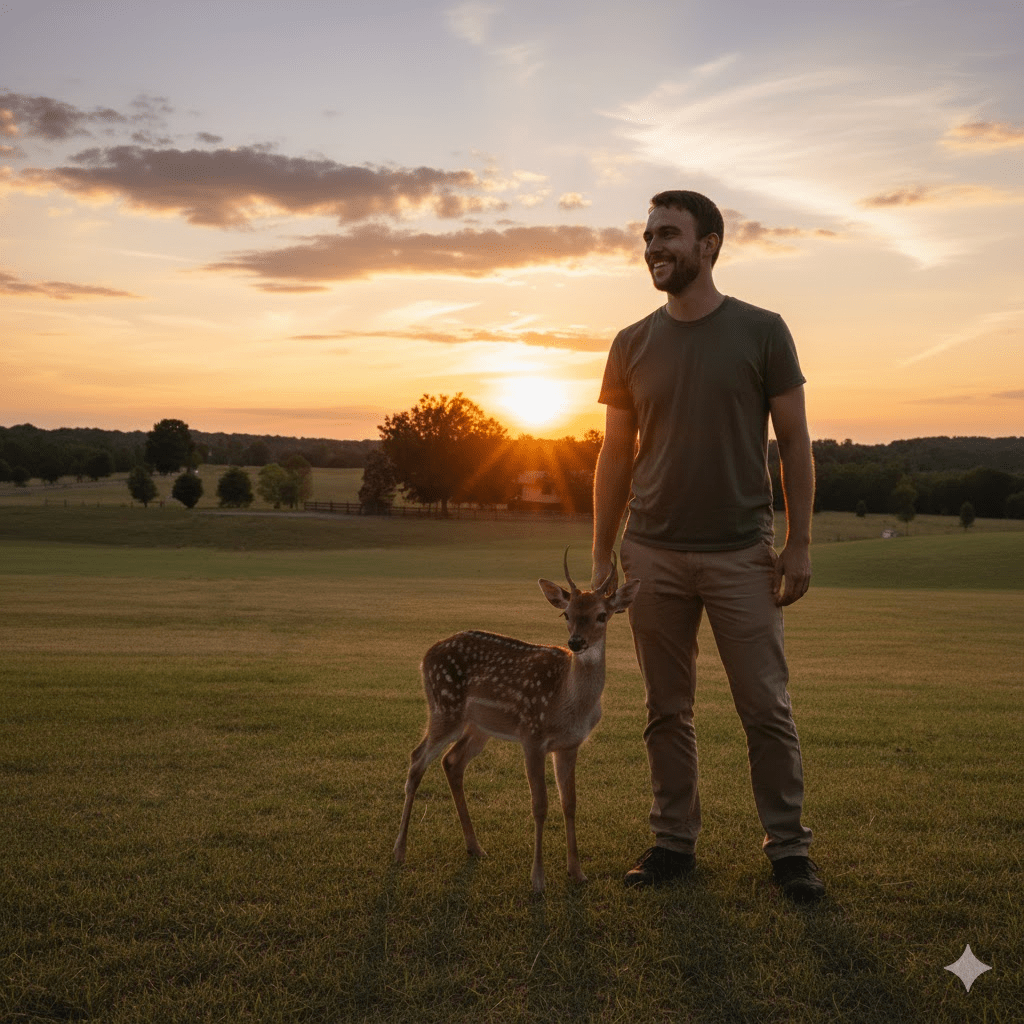In an increasingly urbanized world, moments of genuine connection with nature become more precious. The accompanying image beautifully captures such a moment – a close encounter between a human and a young deer, highlighting a sense of curiosity and perhaps even a nascent trust. This candid snapshot invites us to look beyond the superficial and delve into the rich tapestry of interactions we share with wildlife, particularly deer. These elegant creatures, often seen grazing at the edges of our communities or venturing into our backyards, are more than just a fleeting sight; they are integral parts of our ecosystems and hold significant cultural and ecological value. Understanding their behavior, their role in the environment, and how we can coexist respectfully with them is crucial for fostering a harmonious balance between human development and the natural world. This article will explore various facets of deer in our lives, from their biological characteristics to the ethics of human interaction, aiming to provide a comprehensive perspective on these magnificent animals.

The Biology and Behavior of Deer
Deer, members of the Cervidae family, are found across various continents and comprise numerous species, from the majestic elk to the smaller muntjac. The deer in our opening image, likely a white-tailed deer fawn given its size and markings, represents a species highly adaptable to diverse environments, from dense forests to suburban fringes. Their biology is fascinating; deer are herbivores with a specialized digestive system that allows them to process a wide range of vegetation. Their keen senses – exceptional hearing, a powerful sense of smell, and excellent low-light vision – are crucial for detecting predators and navigating their surroundings. Understanding their natural behaviors, such as their foraging patterns, their social structures (which vary by species), and their reproductive cycles, is fundamental to appreciating their place in the ecosystem. For instance, fawns are typically born in spring and initially spend their time hidden, relying on their camouflage and their mother’s protection, a period during which human interference should be minimized.
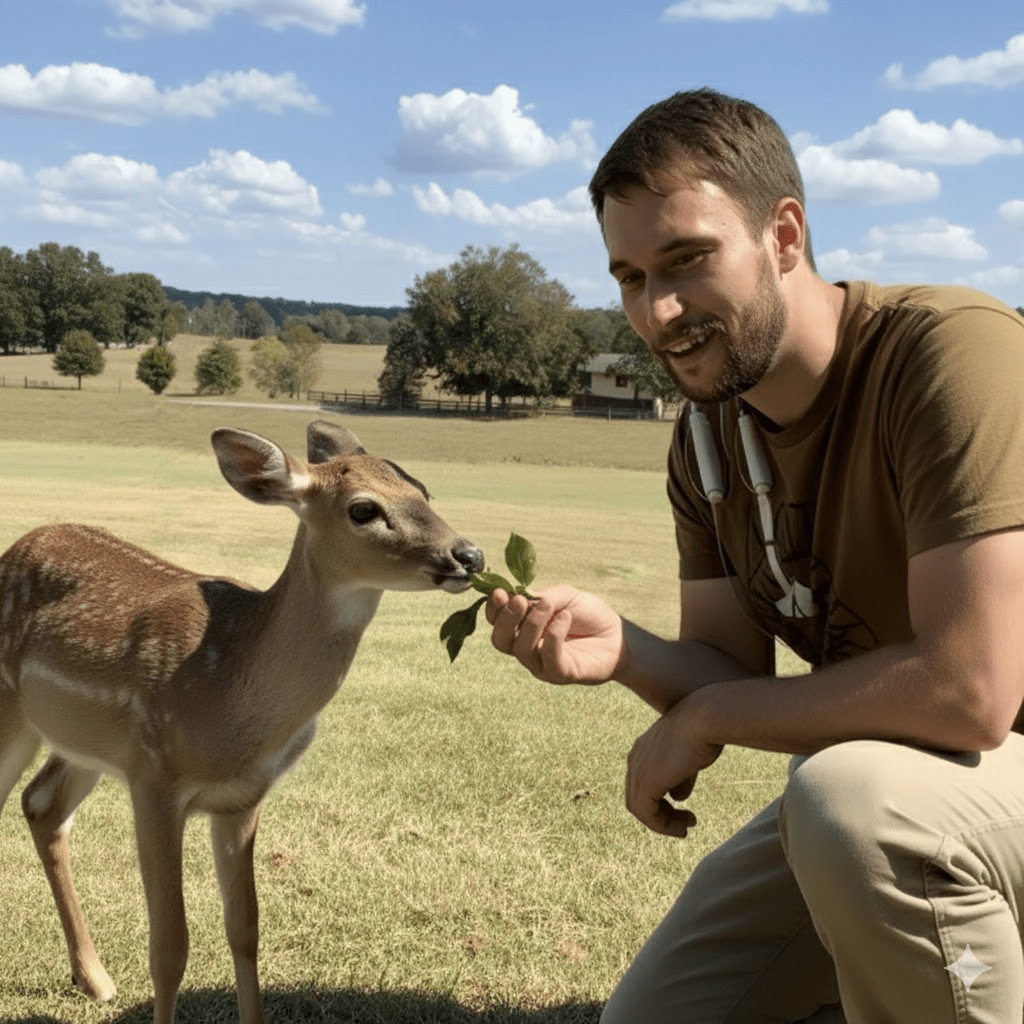
The Ecological Role of Deer
Deer play a vital role in their ecosystems as primary consumers. By grazing and browsing on vegetation, they influence plant distribution and forest regeneration. Their presence helps maintain the health and diversity of plant communities, and in turn, they serve as a food source for predators such as wolves, coyotes, and sometimes even bears, forming a critical link in the food chain. However, deer populations can fluctuate significantly, often influenced by habitat availability, predator presence, and human activities. When populations become too high in certain areas, particularly where natural predators are scarce, deer can overbrowse vegetation, leading to a decline in plant diversity, damage to agricultural crops, and even impacts on other wildlife species that rely on the same plant resources. This highlights the delicate balance within ecosystems and the need for careful management strategies to maintain healthy deer populations and healthy habitats.
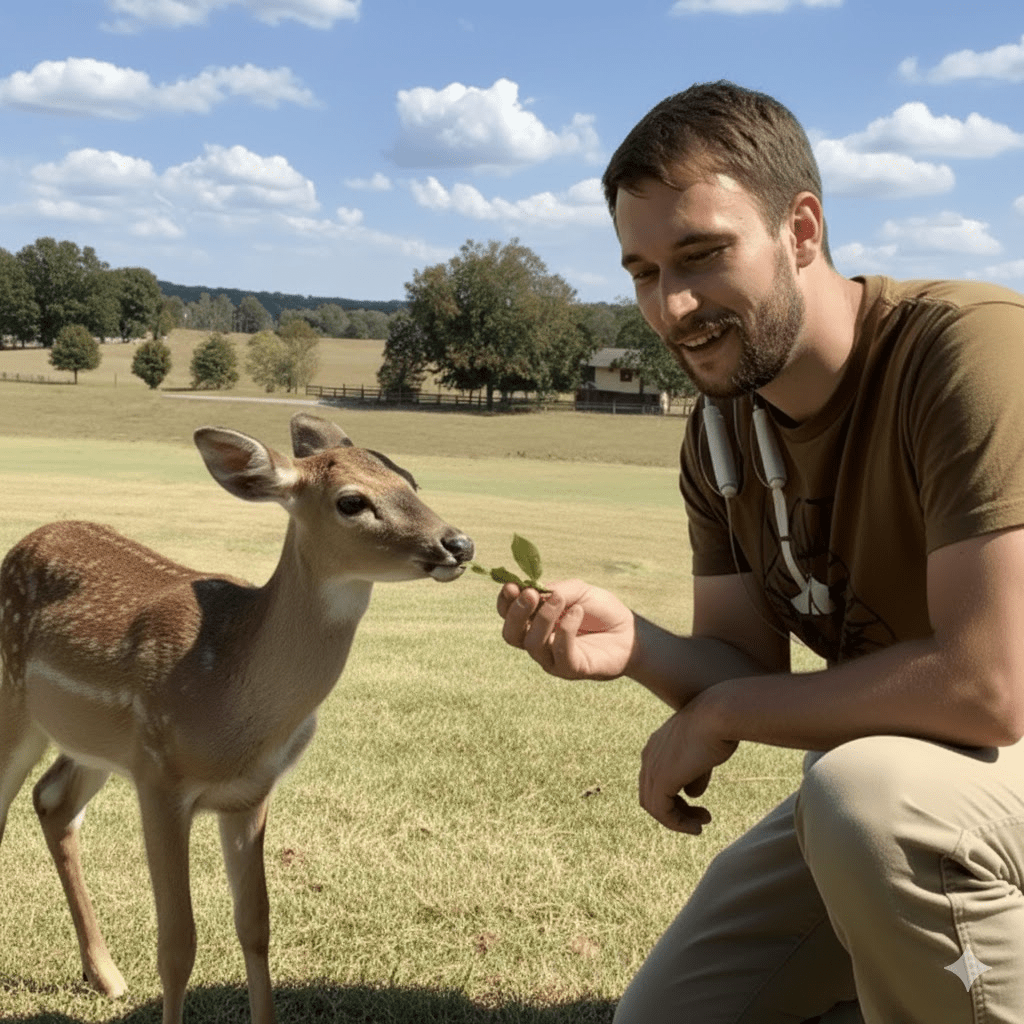
Human-Deer Interactions: Coexistence and Challenges
The increasing overlap between human habitats and deer territories brings both opportunities for appreciation and significant challenges. While many cherish the sight of deer in their yards or local parks, these interactions can also lead to issues such as vehicle collisions, damage to gardens and landscaping, and the potential transmission of diseases like Lyme disease through ticks carried by deer. The image suggests a peaceful interaction, but it’s important to remember that wild animals, even seemingly docile ones, retain their natural instincts. Feeding deer, while seemingly benevolent, can alter their natural foraging behaviors, lead to overpopulation in specific areas, and even make them more susceptible to disease by concentrating them in one place. Responsible coexistence involves understanding these dynamics and adopting practices that respect wildlife while mitigating potential conflicts.
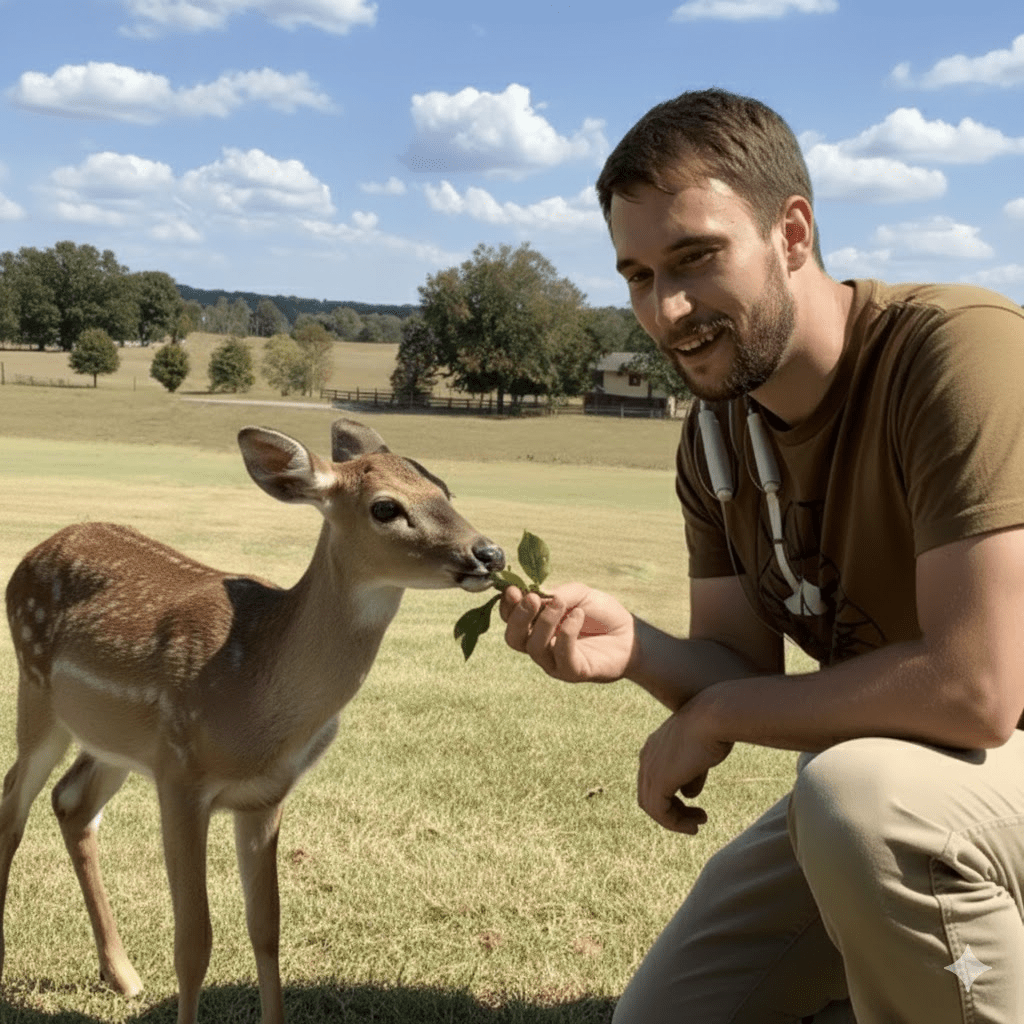
Ethical Wildlife Observation and Photography
The popularity of wildlife photography and observation has grown exponentially, fueled by social media and the desire to connect with nature. While documenting wildlife can be a powerful tool for conservation and education, it’s crucial to approach these activities ethically. The principle of “leave no trace” extends beyond physical waste to minimizing disturbance to animals and their habitats. This means maintaining a safe distance, avoiding sudden movements or loud noises, and refraining from actions that could stress or habituate animals to human presence. The close interaction in the initial image, while captivating, serves as a reminder that such intimacy is not always safe or advisable for either human or animal in a wild setting. Professional wildlife photographers often spend countless hours observing from a distance, using specialized equipment to capture authentic and undisturbed moments, prioritizing the well-being of the subjects over a close-up shot.
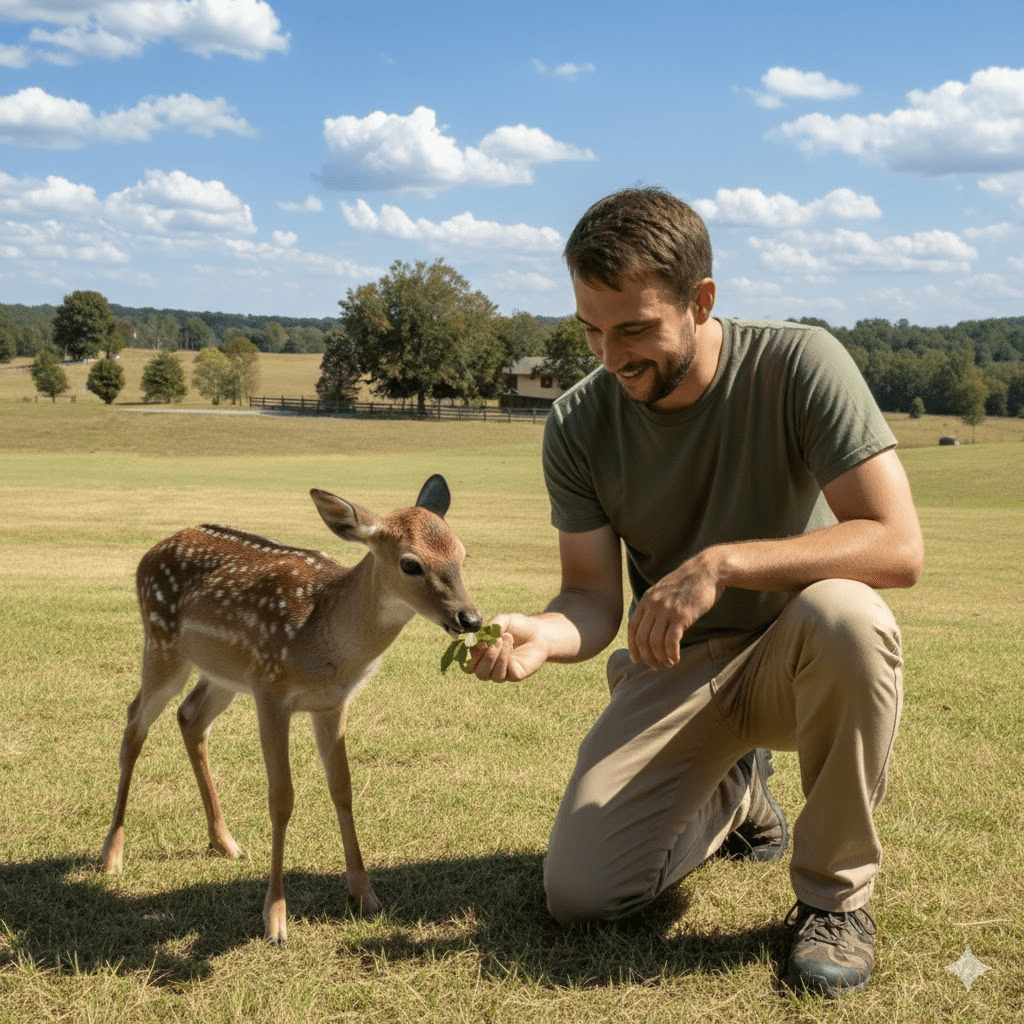
Conservation and Management Efforts
Effective deer conservation and management are multifaceted, involving a combination of scientific research, habitat protection, and regulated hunting where appropriate. Conservation efforts often focus on preserving and restoring natural habitats, ensuring deer have access to adequate food, water, and shelter. This can include land management practices that promote diverse plant growth and connectivity between fragmented habitats. In many regions, regulated hunting plays a role in managing deer populations, helping to prevent overbrowsing and reduce conflicts with human interests. This approach, guided by wildlife biologists, aims to maintain healthy populations that are in balance with their environment. Public education is also a critical component, empowering individuals with knowledge about responsible wildlife interaction and encouraging participation in conservation initiatives.
